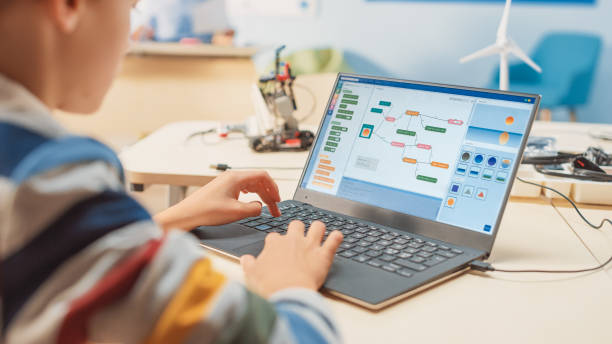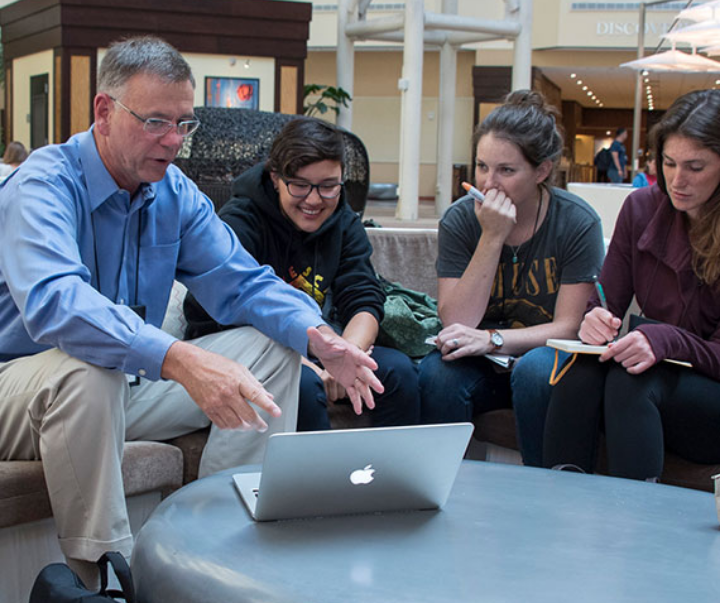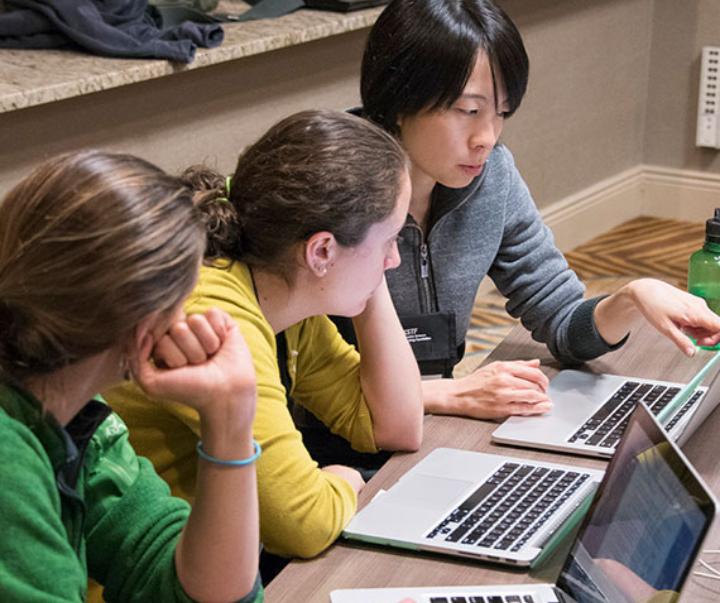The Wipro Science Education Fellowship (SEF) program is a school district transformation program which supports teacher leaders and builds a stronger distributed leadership structure within schools. The Wipro SEF program is based upon the success of the Boston Science Partnership’s Science Education Fellowship, which was supported through the National Science Foundation Math Science Partnership Program from 2009 to 2012.

Fellows meet monthly as a cohort of twenty fellows for professional development workshops addressing a variety of aspects of science teaching, such as effective instructional models, pedagogical content knowledge, or how to engage students in science and engineering practices. Fellows are provided with many opportunities to think about teaching. In addition, teachers work with a smaller cohort of colleagues to discuss core topics of teaching and learning using the Collaborative Coaching and Learning of Science (CCLS) protocol. Central to this model, Fellows share videotapes and student artifacts of specific lessons in order to see one another teaching a similar concept across grade levels and content areas. Fellows are involved in structured inquiry into their own teaching and growth and anchor their lessons and feedback in protocols, tools and resources developed through educational research.

In year 1, Fellows begin developing leadership skills as they work collaboratively with colleagues in larger workshops and in smaller CCLS groups as they share their classroom and provide feedback to their peers through the CCLS protocols. Providing honest and thoughtful feedback is a quality of a good leader. In year 2, Fellows identify opportunities for themselves to take a leadership role within their district and to support district initiatives. To facilitate this, Fellows work with experts in adult learning and leadership in order to develop the skills that allow them to motivate other teachers, to bring other teachers along the professional continuum, and to improve student learning in their district.

Teachers have areas of their professional lives that they hope to grow to meet a need they see in themselves or their students. To encourage their own learning, each fellow identifies and pursues opportunities for growth and learning based on his/her professional growth plans. These might include becoming a mentor to other teachers, or improving presentation skills. In the summer between Year 1 and Year 2 of Wipro SEF, the Fellows map out an individual learning plan that contains a clear vision and identifiable benchmarks and leads them to their desired outcome at the end of Year 2. Wipro SEF calls that plan a GPS or a Growth Plan System. It requires at least 30% of their time in Year 2 to devote to personal growth and at least 30% of their time in leadership activities supporting district initiatives.
KEY COMPONENTS OF THE WIPRO SEF PROGRAM
Corporate Sponsorship
The Wipro Ltd (NYSE:WIT), a global information technology, consulting and outsourcing company, funds the Wipro SEF program. Since August 2012 Wipro has committed over eighteen million dollars to COSMIC at UMass-Boston as the lead university, to partner with other universities in the United States to implement the program for three cohorts of 20 fellows at each of the seven sites for a total of 420 school teachers in districts near the University of Massachusetts Boston, Montclair State University (NJ), Mercy College (NY) the University of North Texas Dallas, Stanford’s Graduate School of Education, University of South Florida, and University of Missouri. This model of partnership, where a STEM center at a college or university partners with a corporate sponsor to carry out a program of Science Education Fellows across several universities and their partner school districts could be implemented across the United States using the Wipro SEF model.
University and Public School District Partnership
Each university sites maintains the program, and engages each of their five partner school districts in the work of the Wipro SEF. This is key to the success of the program. Through the partner district application process it is necessary that each of the partner districts that are selected make a commitment to have their District Science Coordinator (DSC) actively working with the University in the implementation of the program. The DSCs are important because they are a liaison between the Fellows and the Wipro SEF University staff: they help to recruit and to select teachers for the program, they attend monthly meetings, and they assist in the planning of the program. They provide invaluable insight into district priorities and initiatives in which the Wipro SEF program is able to complement and support. They also provide important professional development and leadership to their teacher Fellows.
Working across Partner Districts
One of the strengths of the Wipro SEF program is the fact that the Fellows, the DSCs from the five partner districts and the University personnel become a Professional Learning Community within the Wipro SEF Program. The Wipro SEF Fellows and DSCs from the partner districts find that they have similar needs and common goals. Fellows, through the V-CCLS (vertical articulation of curriculum) and H-CCLS (horizontal articulation) communities state they feel less isolated and are able to accomplish more as reflective practitioners through the sharing of classroom videos and by providing feedback and teaching ideas. All participants, including the University staff, gain more familiarity and build relationships with the neighboring partner districts.
Collaborative Coaching and Learning in Science Communities (CCLS)
The CCLS model was born out of the Boston Science Partnership program and based in the practice of “Observation Cycles” which uses videotapes of classroom lessons for the purpose of changing practice through honest reflection. In Wipro SEF Fellows participate in both vertical CCLS (V-CCLS) and horizontal (H-CCLS) communities in year 1 of the program. The community creates a CCLS culture by setting group norms so the sharing of classroom videos is done is a safe environment and keeps the focus on reflecting upon the selected Course of Study (COS) including science content, science and engineering principles, and research articles. . During the CCLS Cycle, the CCLS communities develop a common language, engage in respectful conversations, and follow specific protocols when viewing and providing feedback to each other’s classroom videos. More about the V-CCLS and H-CCLS communities and timeline is below.
Sharing Collaborative Coaching and Learning Science Research
Fellows are given two opportunities to share what they have learned in their CCLS communities and through their classroom research and reflection in Year 1. In January, at each university site, the Fellows present their V-CCLS findings to their peers through twenty-minute presentations and then a round of warm and cool feedback. This could be considered “practice” for the H-CCLS presentations, which are given at the regional Wipro SEF Teacher Leadership Regional Conference in June of year 1. The regional conference provides an opportunity for the teachers from different university sites to network and build relationships with others who have gone through a similar but not identical program. The Wipro SEF Teacher Leadership Regional Conference is a professional learning environment that is supportive, diverse, and very collaborative for all involved: the Fellows, the District Science Coordinators and the University faculty and staff.
Individual Growth Plan Systems (GPS)
At the end of Year 1, fellows design an individual GPS (Growth Plan System). The plan consists of a clear vision of how the Wipro Fellow can support district initiatives in his/her school and district while also defining personally important work, tied to improving science teaching, that the Fellow may not have an opportunity to do otherwise. It requires at least 30% of their time in Year 2 to devote to personal growth and at least 30% of their time in leadership activities supporting district initiatives. The other 40% of their time can be divided in a way that best fits the Fellow’s GPS.
The GPS is a well-defined plan that shows where each Fellow would like to be at the end of Year 2. Fellows work with a Wipro Leadership GPS Adviser and their DSC to develop their own professional growth plan. Fellows discuss how to lead from the classroom while supporting a district initiative. The plan focuses on ways to improve each fellow’s own instruction and leadership skills. Accordingly, this work ties into the type of professional development the fellow would like to either develop or lead for other science (or elementary) teachers.
Distributed Leadership
At the conclusion of four years, each district has twelve Fellows across elementary, middle and high school who have completed the Wipro SEF requirements. They have all learned a common approach for improving instruction, reflecting on research, understanding how curriculum can be vertically articulated and how science and engineering practices can be integrated into their science content. They have also each participated in a GPS, part of which has focused on working with other teachers in the district and supporting district initiatives.
At the conclusion of the Wipro SEF program, the District Science Coordinator is no longer the sole science leader in the district. The DSC now has twelve Fellows that can support and critique future district science initiatives. This new distributed leadership across the district provides the opportunity for sustainable improvements in K-12 science education in the participating districts long after the Wipro SEF program has concluded.
Vertical Collaborative Coaching and Learning in Science (V-CCLS) is a key component of the Wipro Science Education Fellowship (SEF) program. This process involves teachers from different educational levels (pre-K to high school) working in teams to improve their understanding of science education across grade levels. The V-CCLS focuses on the vertical articulation of curriculum. Teachers are grouped based on a specific science strand (biology, chemistry, earth/environmental science, physics) and select a Course of Study (COS) consisting of a content topic and a pedagogical approach based on a research article.
The second half of the first year of the SEF program is still focused on instruction. The difference now changes from a vertical articulation of curriculum across grades to a horizontal application of a science and engineering practice within a grade band (K-2, 3-5, 6-8, 9-12). New teams are formed and will necessitate cross-district collaboration. In this arrangement Fellows will be much more familiar with the content. In the HCCLS, the manner in which the content is taught comes to the forefront.
The Wipro Science Education Fellowship’s Growth Plan System (GPS) is a key component in its second year, focusing on the development of teacher leadership skills. Fellows design a personalized professional development plan, incorporating both personal and district goals.
Year 3+ and subsequent years of the Wipro SEF program, following the two-year foundation phase, focuses on leveraging the experiences and leadership skills of Fellows to support district transformation. This phase involves diverse initiatives where Fellows collaborate with other teachers and engage more actively with administrators. The program’s overall vision is to promote district transformation through teacher leadership, achieved by establishing a critical mass of teacher leaders in various school districts.
